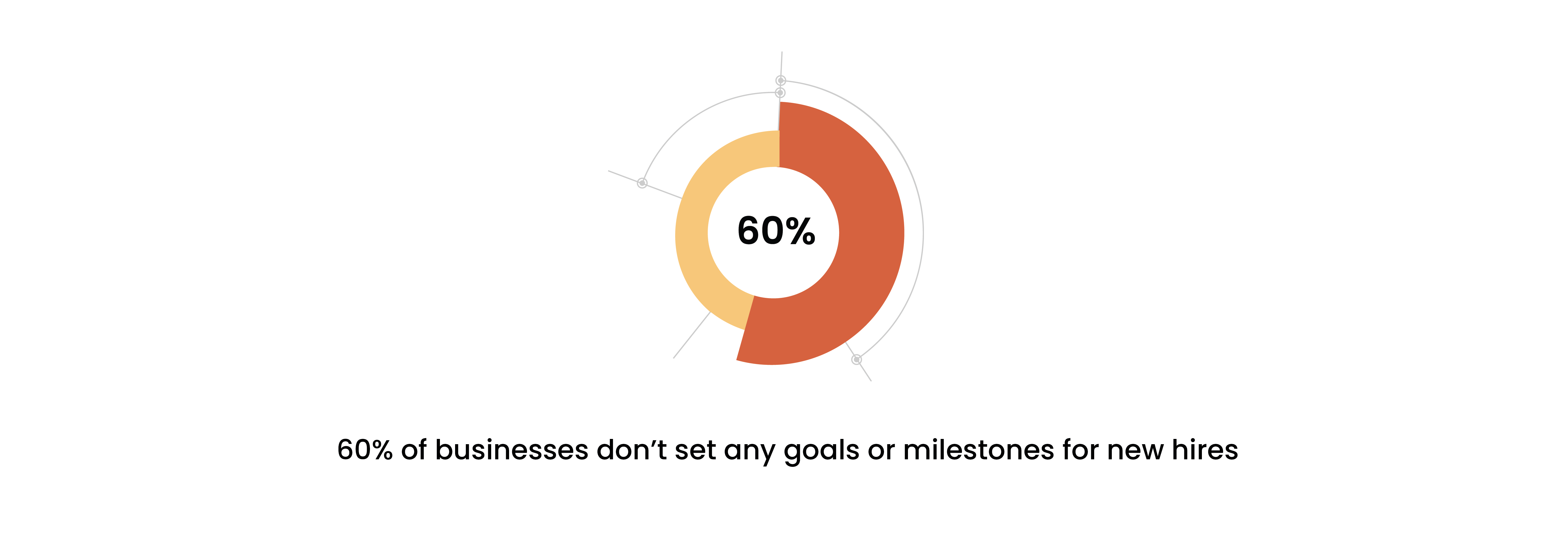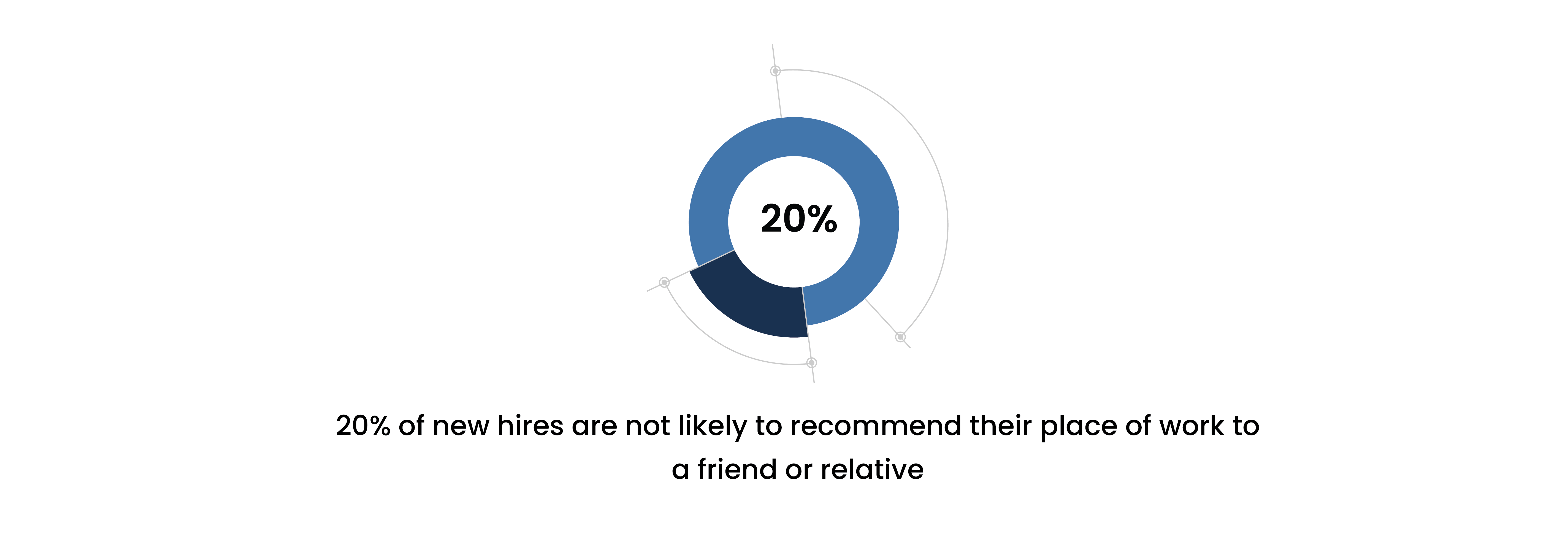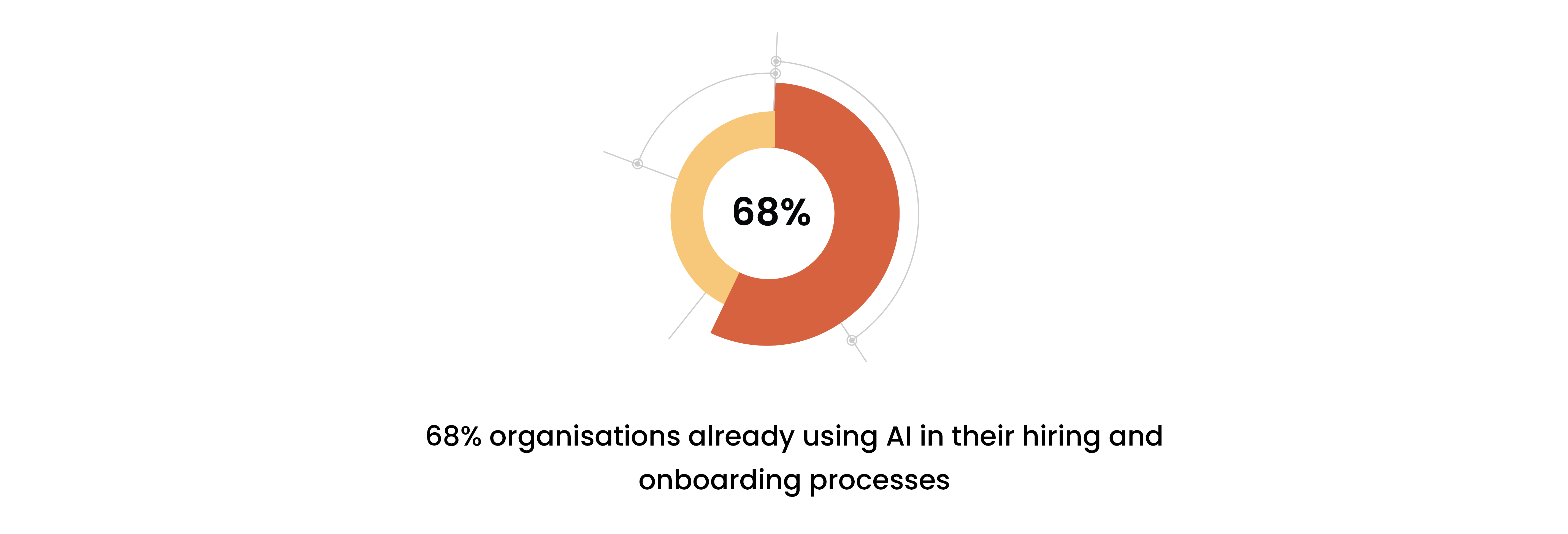Employee onboarding has emerged as one of the most crucial processes in 2021. From ensuring the new hire understands their job role well to helping them become more productive and do their best, employee onboarding has an impact on it all. But more importantly, it has an impact on how you grow as an organization.
Wondering if employee onboarding will remain crucial in 2022? Yes. Read on to know 15 employee onboarding stats from our survey to help you understand why.
Prefer PDFs that you can refer to when needed? We’ve got you. Download our report here!
Over 52% of respondents say that in their organization the average length of an onboarding program is one month or more
Every organization has defined an employee onboarding period for different roles across different departments. The length of this period varies depending on how vast or complex the role is. In general, longer onboarding programs are associated with stronger talent and business outcomes in terms of engagement, reputation, productivity and development. But longer onboarding processes also mean recurring costs that may or may not be affordable for an organization.
The average cost of onboarding an employee is $830 to $1000
If about a month of onboarding one employee comes to about $800-$1000, depending upon the role they’re filling in, imagine having to extend the program for another month and adding further to this cost. This cost also becomes much heavier to bear if you’re hiring multiple resources at a time. A lot of this expense is owed to the manual processes being used at organizations for hiring and onboarding.
67% of respondents from various industries complain about a >10% drop off rate pre- joining

The average time-to-fill a job role or position is 36 days. Imagine spending more than a month to find the right hire, only to see 10% of them drop off even before they join, and having to start all over again.
Large-size organizations are facing more than 16% attrition rate within the first six months!
Attrition occurs when the workforce at a company dwindles in terms of how engaged they are at what they do, following a period in which a number of people retire, resign and are not able to get replaced in a timely manner. This basically translates to having a bunch of missing team members from your sales department, and your revenue stream coming to a standstill.
A disconnect between hiring and onboarding process is the top onboarding challenge, followed by lack of employee engagement, short programs, and lack of personalization
HR departments tend to spend a considerable amount of time seeking out the right talent. Sometimes so much so that they get distracted from actually onboarding the talent that does decide to join them, resulting in inconsistencies about the role, the expectations and more, which eventually leads to a drop in employee engagement very early on. This indicates the importance of personalization of onboarding for new hires in a more systematic and automated manner.
Most HR decision-makers believe that they have good or excellent onboarding, however the reality tips towards fair or poor in most cases
Our survey found that despite HR managers feeling like they have nailed the onboarding process, the truth looks way different. A bad onboarding experience not only leaves a negative impression on your new employee, but also hinders their time-to-productivity, leading to a shorter and unfruitful stay at the company.
60% of businesses don’t set any goals or milestones for new hires

The failure to set goals and devise a clear plan of action during the onboarding process is common in most businesses. The lack of performance metrics is leading to new hires either not giving their full attention to work or getting disengaged from their roles very early, not knowing what they’re expected to achieve as they begin.
20% of new hires are not likely to recommend their place of work to a friend or relative

Referrals make for the best hires at organizations as they come from people who fully understand the organization’s goals and vision. But it was found that 20% of new hires are not likely to further recommend their place of work in their network, owing to the lack of understanding of organizational goals and their own role in it. This indicates that organizations need to ensure a better understanding of their vision and mission ‘during’ the onboarding process, as opposed to ‘after’.
Now that you know about the challenges and drawbacks of the current state of employee onboarding, let’s look into some statistics we found while conducting the survey about how this process is slated to change in 2022.
More than 50% organizations have shifted to online applications, virtual hiring & virtual onboarding post COVID-19
The pandemic moved most organizations to remote working, which meant the HR had to adapt to the new ways of interacting with talent. We found that more than 50% of them are now using online applications for hiring and onboarding so that physical limitations do not hinder the processes in the coming period of time.
68% organizations are already using AI in their hiring and onboarding processes

We also found that about 68% of organizations are already making use of artificial intelligence and automations in their hiring and onboarding processes. The adoption comes from the inability to have physical interactions during the two processes and also to enable seamless flow of employee data.
92% HR folks are very much familiar with AI/automation in the hiring and onboarding process
At the same time, we found that many HR professionals are already well versed with the different applications of artificial intelligence in the hiring and onboarding processes. This only goes to say how we will be seeing them implement more use cases in 2022 to make the processes more efficient and effective.
90% HR folks says that automated processes are ‘very important’ for their organization’s future
HR is a continually evolving role and with the increase in need of personalization in hybrid work models, most professionals feel automated processes are important for organizations. They state how this will leave them with more time to build interpersonal relationships and understand employees better, especially new hires, to reduce attrition rate through early problem-identification.
87% of HR personnel are ‘very committed’ towards adopting AI for hiring and onboarding
We also noticed that HR professionals are proactively exploring artificial intelligence for their organizations. The goal is to not just automate hiring and onboarding, but also make the processes more intelligent with the help of data. This indicates how important ‘understanding’ employee needs is becoming for fast-growing companies.
83% have indicated that they are very likely to adopt an automated onboarding process in the next 12-24 months
From those exploring the capabilities of artificial intelligence for employee onboarding, 83% indicate that their organization is very likely to adopt automation. This indicates how stakeholders at organizations will be seen setting aside more budget for onboarding in 2022 and ensure that they are able to include smart automations into processes.
41% of these respondents have anticipated that they will adopt an automated onboarding process within 6-12 months
We also found that about 41% of HR professionals are sure to be adopting automation in onboarding within the next six months. This represents the pressing need for automation that is nudging organizations to move faster towards adoption of technology in their employee onboarding processes.
HR professionals are fast progressing towards the adoption of automation in most of their processes; a big chunk focusing on employee onboarding in 2022.
Want to learn more about the current state of employee onboarding and how it is changing in 2022, and the years ahead? Download our State of Employee Onboarding Report here.
These statistics indicate the increasing importance of strategic employee onboarding at organizations – especially with hybrid working models. At the same time, they also show how HR professionals are willing to push their boundaries to adopt new-age technology like artificial intelligence to be able to ‘enhance’ their functions at organizations with the help of faster data processing.







3 Comments